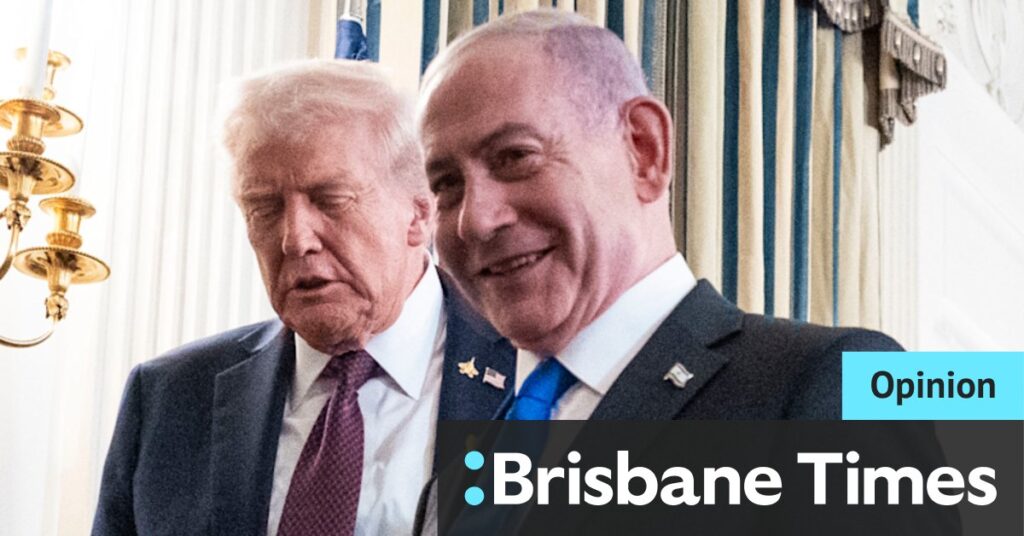
Donald Trump’s recently unveiled 20-point “peace plan” for Gaza, endorsed by Israeli Prime Minister Benjamin Netanyahu, purports to offer a blueprint for ending the ongoing conflict. However, critics argue that the plan is more about reframing the conflict than resolving it. Its language is vague, its mechanisms impractical, and its assumptions historically misleading. While the plan reinforces Israel’s position, it leaves Palestinians with little more than recycled illusions. Despite these criticisms, the plan may be the only practical path to pause the violence and save what remains of Gaza’s population from further devastation.
The announcement comes as the region continues to grapple with intense conflict. The deliberate ambiguity woven into every stage of the plan is its first major flaw. Netanyahu’s speech following Trump’s announcement underscored this point: his objectives do not align with the text in either substance or consequence. For instance, the proposed release of 250 Palestinian prisoners serving life sentences lacks clarity on who will be freed or who decides their release. Historically, prisoner names have been central to negotiations between Israel and Palestinian factions, and this situation is no different.
Unpacking the Plan’s Ambiguities
Netanyahu linked the success of the proposed international “Board of Peace” to a permanent end to the war. This framing, when considered alongside the plan’s provision that Israeli forces will retain a “security perimeter presence” until Gaza is deemed fully secure, signals Israel’s intention to maintain open-ended control over Gaza’s security apparatus. Leaving such matters undefined effectively guarantees Israeli control of the process.
The reference to aid flows is equally telling. By acknowledging that aid “will proceed without interference,” the plan implicitly concedes what has long been obvious: Israel has systematically obstructed humanitarian access. Yet, the outlined mechanism invites a continuation of the same problem, leaving space for the much-criticized Gaza Humanitarian Foundation to dominate the delivery system, while excluding the United Nations Relief and Works Agency, the region’s foremost body for delivering aid and managing humanitarian affairs. In its current format, the plan ensures aid remains an extension of politics.
The Role of International Figures
Perhaps the most farcical element is the creation of a so-called Board of Peace featuring figures such as former UK Prime Minister Tony Blair. Blair, who previously led the Quartet – the US, EU, UN, and Russia’s Middle East peace envoy mechanism – from 2007 to 2015, oversaw a period where Israel entrenched its system of settlements, thwarted Palestinian reconciliation attempts, and cemented its control over the West Bank. To imagine Blair overseeing Palestinian “modern governance” is not diplomacy, but satire. It suggests a Palestinian future managed indefinitely by the very international actors complicit in entrenching occupation.
The call for reforming the Palestinian Authority is another recycled talking point. But what exactly are the “international standards” the authority must meet? In 2011, Washington and its allies rejected the authority’s UN statehood bid despite the UN, World Bank, and IMF confirming it had achieved benchmarks for sound governance that should have readied it for statehood.
Historical Context and Future Implications
Talk of a “New Gaza” that commits to peaceful coexistence with its neighbors obscures the very nature of Gaza itself. Gaza is not a self-contained polity; nor were its people ever meant to exist in isolation. It is, fundamentally, a refugee camp, the concentrated result of expulsions in 1948. International law recognizes the right of return. Yet, the plan treats Gaza’s residents as if they were a distinct nation, severed from the Palestinian whole.
The plan also speaks of “battle lines” frozen until Israel completes its staged withdrawal, as though Gaza were a conventional theater of war between two armies. What Israel has waged is not a symmetrical war but a war of elimination, one that has been described by the UN and leading international organizations as genocide. Israel’s defense minister framed the latest operation in Gaza as a “demolition” rather than engagement with organized brigades. To accept the plan’s language is to erase the reality of destruction and to grant Israel the dignity of a military opponent where none exists.
“This is less a peace plan than a political instrument. Its indeterminacy is deliberate. To treat it as a solution is to misread it; to treat it as the only available off-ramp may still be a rational, if tragic, choice in the face of a continuing catastrophe.”
In a stark irony, the plan may also be the last available mechanism to halt the killing. Several Arab and Islamic governments, along with the Palestinian Authority, have signaled support, presenting it as the first proposal Israel has not rejected outright since January.
Time will reveal if the plan’s vagueness serves only as deflection or can actually bring an end to the war. For Palestinians, alternatives are vanishingly thin. Accepting a text that lets Israel interpret almost every clause to its advantage risks surrendering history, rights, and memory; rejecting it risks the continuation of annihilating violence.






